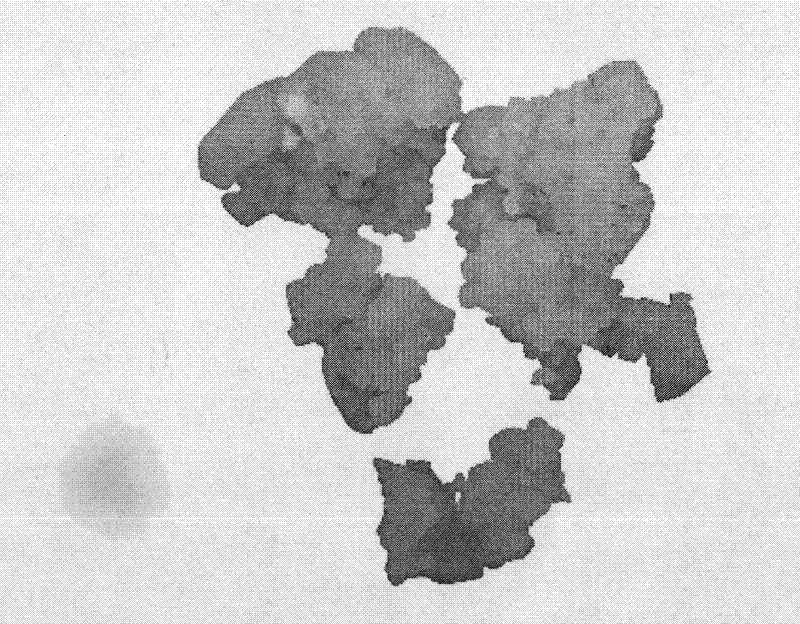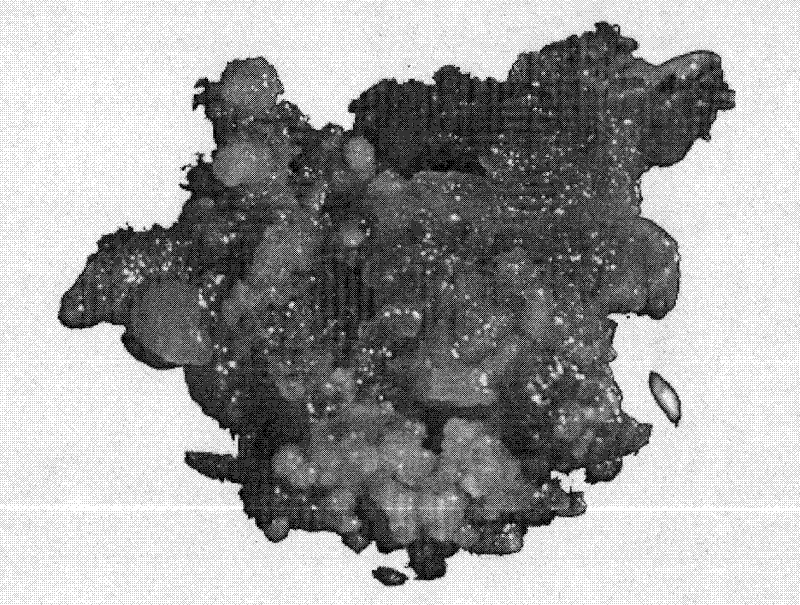Regeneration and cultivation method of high frequency somatic embryos for overcoming shamrock variety genotypic disorder
A variety genotype, regenerative culture technology, applied in the field of botany, can solve the problems of self-incompatibility, difficulty in solving the obstacles of different varieties and genotypes of clover, and the small number of varieties, so as to overcome the obstacles of different varieties and genotypes, Improve the frequency of regenerated plants and the effect of efficient and stable genetic transformation
- Summary
- Abstract
- Description
- Claims
- Application Information
AI Technical Summary
Problems solved by technology
Method used
Image
Examples
specific Embodiment approach
[0073] figure 1 Embryotype cells cultured on embryogenic callus induction medium for clover explants; figure 2 It is a somatic embryo developed on the culture medium of embryo subculture for heteroclover; image 3 It is a somatic embryo developed by red clover on the embryo subculture medium; Figure 4 It is a somatic embryo developed on the culture medium of embryo subculture of Clover clover; Figure 5 Torpedo embryos developed from somatic embryos on embryo maturation and germination medium; Figure 6 Cotyledonous embryos developed from somatic embryos on embryo maturation and germination medium; Figure 7 Differentiated seedlings germinated into torpedo embryo subculture; Figure 8 Differentiated seedlings germinated into cotyledon embryo subculture; Figure 9 The seedlings developed from the differentiated seedlings of torpedo embryos; Figure 10 Seedlings developed from differentiated seedlings from cotyledon embryos.
[0074] Such as Figure 1-Figure 10 Shown: ...
Embodiment 1
[0132] A. Embryogenesis callus induction medium (improved SH+8mg / L 2,4-D+0.2mg / L 6-BA+30g / L sucrose+0.3%phytagel)+B. Embryo subculture formation medium ( Improved SH+8mg / L 2,4-D+0.2mg / L 6-BA+50g / L sucrose+0.35% phytagel)+C. Embryo maturation and germination medium (improved MS+30g / L white sugar+0.7% Agar)+D. Seedling growth acclimatization medium (1 / 2 improved MS+20g / L white sugar+0.7% agar), the pH of all above-mentioned mediums is about 5.8 after autoclaving.
Embodiment 2
[0134] A. Embryogenesis callus induction medium (improved SH+8mg / L 2,4-D+0.5mg / L 6-BA+30g / L sucrose+0.3%phytagel)+B. Embryo subculture formation medium ( Improved SH+8mg / L 2,4-D+0.5mg / L 6-BA+50g / L sucrose+0.35% phytagel)+C. Embryo maturation and germination medium (improved MS+30g / L white sugar+0.7% Agar)+D. Seedling growth acclimatization medium (1 / 2 improved MS+20g / L white sugar+0.7% agar), the pH of all above-mentioned mediums is about 5.8 after autoclaving.
PUM
 Login to View More
Login to View More Abstract
Description
Claims
Application Information
 Login to View More
Login to View More - R&D
- Intellectual Property
- Life Sciences
- Materials
- Tech Scout
- Unparalleled Data Quality
- Higher Quality Content
- 60% Fewer Hallucinations
Browse by: Latest US Patents, China's latest patents, Technical Efficacy Thesaurus, Application Domain, Technology Topic, Popular Technical Reports.
© 2025 PatSnap. All rights reserved.Legal|Privacy policy|Modern Slavery Act Transparency Statement|Sitemap|About US| Contact US: help@patsnap.com



